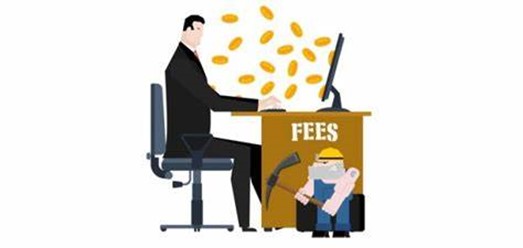When it comes to trading on cryptocurrency exchanges, there are many different fees that traders need to be aware of. One of the most common fees is the taker fee, which is a fee that is charged to traders when they take liquidity from the order book. In this article, we will explore what taker fees are, how they work, and what traders need to know about them.

What is a Taker Fee?
A taker fee is a fee that is charged to traders when they execute an order that removes liquidity from the order book. When a trader places an order to buy or sell cryptocurrency, they can either create liquidity by adding an order to the order book, or they can take liquidity by executing an order that matches an existing order on the book.
When a trader executes an order that takes liquidity from the book, they are considered as a "taker". Taker fees are charged to traders who take liquidity, while "maker" fees are charged to traders who provide liquidity by adding orders to the book.
How Do Taker Fees Work?
Taker fees are typically a percentage of the total value of the order that is executed. For example, if a trader executes an order to buy $1,000 worth of Bitcoin and the taker fee is 0.2%, they would be charged a fee of $2.
Taker fees can vary depending on the exchange that a trader is using, as well as the trading volume of the trader. Some exchanges offer tiered fee structures, where traders with higher trading volumes can receive lower taker fees.
It is important to note that taker fees are not the only fees that traders need to be aware of. There are also withdrawal fees, deposit fees, and other fees that can be charged by exchanges. Traders should always be aware of the fees that are associated with trading on a particular exchange.
Why Do Exchanges Charge Taker Fees?
Exchanges charge taker fees as a way to generate revenue. By charging fees on trades, exchanges are able to cover their operating costs and make a profit. Taker fees also encourage traders to provide liquidity to the order book, which can help to increase trading volume and improve price stability.
Taker fees can also help to deter traders from engaging in certain types of trading strategies, such as high-frequency trading, which can create market instability and make it more difficult for other traders to execute trades.

Advantages of Taker fee
Taker fees have several advantages for both cryptocurrency exchanges and traders:
Revenue Generation:
Taker fees are a primary source of revenue for exchanges. By charging taker fees, exchanges are able to cover their operational costs and invest in improving their services and security.
Encourages Liquidity:
Taker fees can incentivize traders to provide liquidity to the order book. This increased liquidity can lead to better price stability, faster execution times, and a more efficient marketplace.
Market Stability:
By charging taker fees, exchanges can discourage certain trading strategies, such as high-frequency trading, which can create market instability. This helps to ensure a fair and level playing field for all traders.
Fairness:
Taker fees help to ensure that traders who actively trade and provide liquidity to the market pay their fair share of fees. This can prevent traders who engage in passive trading strategies from being unfairly burdened with fees.
Tiered Fee Structures:
Some exchanges offer tiered fee structures, which reward traders who have higher trading volumes with lower taker fees. This can provide an incentive for traders to increase their trading volume, leading to increased liquidity and a more active marketplace.
Overall, taker fees are an important fee structure for cryptocurrency exchanges and traders. They help to ensure that exchanges can generate revenue, provide fair trading opportunities, and maintain a stable marketplace.
Drawbacks of Taker fee
While taker fees offer several advantages, they also have some potential drawbacks, including:
Cost:
Taker fees can be a significant cost for traders, especially for those who execute a high volume of trades or large trades. This can eat into their profits and make it more difficult to achieve their trading goals.
Complexity:
Taker fees can add complexity to trading and make it more difficult for traders to understand the costs associated with their trades. This can make it harder to compare fees across different exchanges and to make informed trading decisions.
Incentivizes Trading Against the Market:
In some cases, taker fees can incentivize traders to trade against the market by placing orders that take liquidity from the order book, rather than adding liquidity to the book. This can lead to increased volatility and market instability.
Limited Flexibility:
Taker fees can limit the flexibility of traders by discouraging certain trading strategies, such as frequent trading or small trades. This can make it more difficult for traders to adapt to changing market conditions or to implement the trading strategies that best suit their needs.
Hidden Fees:
Some exchanges may charge additional fees on top of taker fees, such as deposit fees or withdrawal fees, which can add to the overall cost of trading on the exchange.
Overall, while taker fees offer several advantages, they can also have some potential drawbacks that traders need to be aware of. Traders should carefully consider the fees associated with trading on an exchange and how these fees may impact their trading strategy and profitability.
Conclusion
Taker fees are a common fee that traders need to be aware of when trading on cryptocurrency exchanges. These fees are charged to traders who take liquidity from the order book, and they are typically a percentage of the total value of the order that is executed. Taker fees can vary depending on the exchange and the trading volume of the trader. By charging taker fees, exchanges are able to generate revenue, cover their operating costs, and encourage traders to provide liquidity to the order book.
